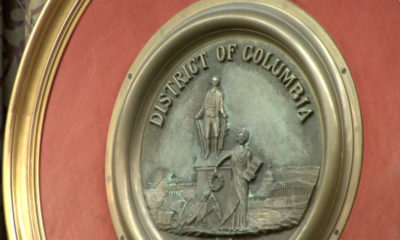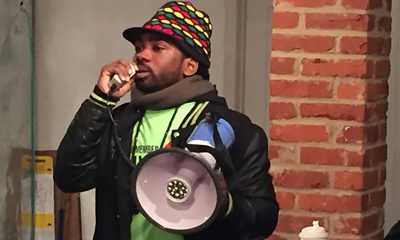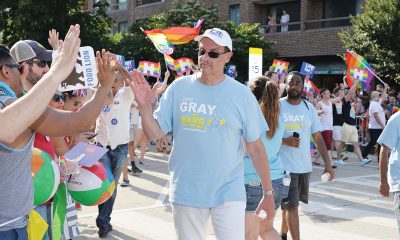Local
Fenty leads Gray by 6 points in Blade poll
Small sample hints at gay vote in D.C. mayor’s race
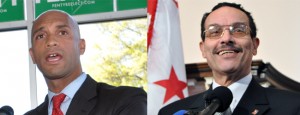
Mayor Adrian Fenty leads his primary opponent D.C. City Council Chair Vincent Gray in an unscientific straw poll of LGBT voters the Blade conducted during Capital Pride. (Washington Blade photos by Michael Key)
Participants in an unscientific straw poll conducted by the Washington Blade at the Capital Pride street festival June 13 said they would vote for D.C. Mayor Adrian Fenty over his chief rival, City Council Chairman Vincent Gray, 40.7 percent to 33.8 percent.
The poll shows Fenty with a 6.9 percent lead among the 145 mostly LGBT festival attendees that participated in the poll.
But nearly 25 percent of the straw poll participants indicated they had yet to decide who would get their vote for mayor in the Sept. 14 Democratic primary. Because the overwhelming majority of D.C. voters are registered Democrats, the primary almost always predicts the winner in the November general election.
Mayoral contender Leo Alexander, a former TV news anchor who supports bringing the city’s same-sex marriage law before voters in a ballot initiative, received support from less than 1 percent of the straw poll respondents. Eight other, lesser-known mayoral candidates received no votes in the straw poll.
In the hotly contested race for City Council chairman, respondents in the Blade straw poll indicated they would vote for at-large City Council member Kwame Brown over his main rival, former Ward 5 Council member Vincent Orange, 37.2 percent to 8.3 percent. Slightly more than 43 percent said they were undecided in that contest.
Two lesser-known candidates in the race, Dorothy Douglas and Calvin Gurley, received 1.3 percent and 0.7 percent respectively.
Orange came out against legislation to legalize same-sex marriage in the District when he ran for mayor in 2006, and denounced his mayoral rivals, including Fenty, who supported gay marriage. He said this year that he’s changed his mind on the matter and now supports the same-sex marriage bill that the Council passed and Fenty signed.
In the race for at-large Council member, incumbent Phil Mendelson outscored gay challenger Clark Ray, 45.1 percent to 13.9 percent, among straw poll respondents. About 35 percent said they were undecided in the race. At-large candidate Donna Jean Alston received 2.8 percent of the straw poll vote, with candidates Kelvin Robinson and Will Ross receiving no votes.
The 145 respondents in the Blade’s D.C. election straw poll comprised a far smaller number than those who participated in a separate Blade presidential approval rating poll also conducted at the Capital Pride street festival.
The 145 respondents are too few to make the straw poll a statistically valid sample of the LGBT D.C. residents who attended the Capital Pride festival. But Blade editor Kevin Naff said the straw poll provides the only available glimpse so far into where LGBT voters stand in the race for mayor and City Council chair and the contest for an at-large Council seat in which an openly gay candidate is considered to have a shot at winning.
No city polls conducted to date, including those by the Washington Post, have included information about the LGBT vote, which is considered influential in D.C. elections.
A total of 560 people completed the Obama approval poll, which asked respondents to disclose whether they approve or disapprove of President Barack Obama’s handling of LGBT issues as well as all matters. The Blade is planning to release the results of that poll later this month.
The greater participation in the presidential approval poll suggests that a significantly larger percentage of people attending the Capital Pride street festival were from jurisdictions outside D.C., such as the Virginia and Maryland suburbs and other mid-Atlantic states.
Blade staff members invited Capital Pride attendees to participate in the poll as the attendees walked past the Blade booth at the festival. All attendees could complete the presidential approval poll, but only attendees additionally identifying themselves as D.C. residents were allowed to participate in the D.C. election poll.
Among the 145 respondents in the Blade D.C. election straw poll, about 73 percent identified as being gay male, 13 percent were lesbian, about 5 percent were bisexual, 0.7 percent were transgender, 1.4 percent identified as queer, about 8 percent were straight, and 0.7 percent identified as other.
By race and ethnicity, about 77 percent of respondents identified as white, 17 percent were black, about 7 percent were Latino, 1.4 percent were Asian-Pacific Islander, and 2.7 percent identified as other.
In a breakdown by age, about 21 percent of respondents identified as being between 17 and 29; about 52 percent were between 30 and 49; about 24 percent were between 50 and 64; and 0.38 percent were 65 or older.
Just 119 of the 145 respondents answered a question asking them to identify the ward in which they live. By ward, the breakdown was 20 from Ward 1; 36 from Ward 2; 12 from Ward 3; 10 from Ward 4; 14 from Ward 5; 23 from Ward 6; three from Ward 7; and one from Ward 8.
The small representation of respondents from Wards 7 and 8 suggests that Gray might have received more support in the Blade poll had more people from those two wards participated in the poll. Other public opinion polls have shown Gray leading Fenty by a wide margin in wards 7 and 8, and gay activists living in the two wards have said they believe gays in the two wards also back Gray by a significant margin.
But with some political pundits predicting voters will be nearly evenly divided citywide between Fenty and Gray as the September primary approaches, the gay vote could be a key factor in the outcome of the election.
Although Gray won the endorsement last month of the Gertrude Stein Democratic Club, the city’s largest LGBT political group, many believe LGBT voters are closely divided over the mayoral contest. A significant number of LGBT activists have yet to take sides in the mayoral race, a development backed up by the Blade poll showing that 24.8 percent of respondents are undecided in the race.
The Blade poll finding that Ray, a gay Democratic activist and former D.C. Department of Parks & Recreation Director, is trailing Mendelson by more than 30 points could mean any of several factors are at play.
Mendelson supporters have predicted LGBT voters will back Mendelson because of his strong support for LGBT rights, including his leadership in shepherding the gay marriage bill through the Council last year in his role as chair of the committee with jurisdiction over the bill.
Ray’s poor showing in the Blade poll could also be due to his lack of name recognition compared to Mendelson, who has sat on the Council for nearly 12 years.
Gay Democratic activist Peter Rosenstein, a campaign adviser for Ray, said the sample was too small to be an accurate predictor in the election.
Rosenstein said the only aspect of the poll that could be a factor is its high number of undecided voters in the mayoral and at-large Council races.
“That’s not a good sign for an incumbent like Mendelson, who has been in office for 12 years,” he said.
Gay activist Bob Summersgill, a Mendelson supporter, said that while the number of participants in the Blade poll is small, its composition of mostly white gay men is a demographic for which Ray should have made a stronger showing as a gay candidate.
“Phil beat Ray three to one in what should be Clark Ray’s best demographic,” Summersgill said. “And Ray even lost to undecided, two to one. I think that’s pretty significant and shows the lack of name recognition and lack of seriousness which the community is generally giving him.”
Yet Summersgill and Jeffrey Richardson, president of the Stein Club, noted that the large number of respondents to the Blade poll saying they were undecided in the Council chair and at-large Council races also indicates those two races have received far less media coverage and voter attention than the widely publicized mayoral race between Fenty and Gray.
“The reality is Phil Mendelson is the incumbent with higher name recognition,” Richardson said. “And even though Clark Ray was a director of the Department of Parks & Recreation, because Phil is the incumbent and has done so much legislatively and has been vocal on so many different issues, even marriage equality, people know and recognize what he has done.
“So Clark Ray has a lot of ground to gain in trying to overcome the name-recognition battle,” Richardson said. “But in regards to where people really would be with one over the other, I’m not so certain.”
The Stein Club is scheduled to hold its endorsement meeting and vote on the at-large Council and Council chair races on Monday at Town nightclub in D.C.
Gay Democratic activist Lane Hudson, a volunteer in Gray’s mayoral campaign, said the Blade poll shows strong potential for Gray, even though it reveals him to be trailing Fenty among the sample of Pride festival goers.
“I think the results show that there’s a wide opening for Vince Gray to win a significant majority of the LGBT vote if he can show that he is empathetic to the issues that are important to our community, such as a strong response from the mayor’s office on hate crimes, a comprehensive HIV/AIDS prevention strategy, and LGBT youth and schools,” Hudson said.
Hudson and other Gray supporters have said Fenty’s record is weak on those issues.
“It’s significant because those are people who are not necessarily the most active. If you look at the most active in our community — the Stein Club — Vince got 63 percent,” he said. “So as the gay community learns more about candidates in the race, I think Vince Gray’s numbers will go up significantly.”
Deacon Maccubbin, former owner of D.C.’s Lambda Rising bookstore and a Fenty supporter, said he wasn’t surprised at the Blade poll’s finding that a large number of respondents are undecided in the mayoral race.
“But I have seen movement toward Fenty and I think he’ll do fine,” he said. “I think the gay vote is going to go the same way the city vote goes.
“I think that between the two candidates, there’s not a whole lot of difference on gay-specific issues and consequently Adrian Fenty has come through and done what he promised he was going to do. And as a result, I think he’s earned the support of the community.”
Rehoboth Beach
Rehoboth’s Blue Moon is for sale but owners aim to keep it in gay-friendly hands
$4.5 million listing includes real estate; business sold separately
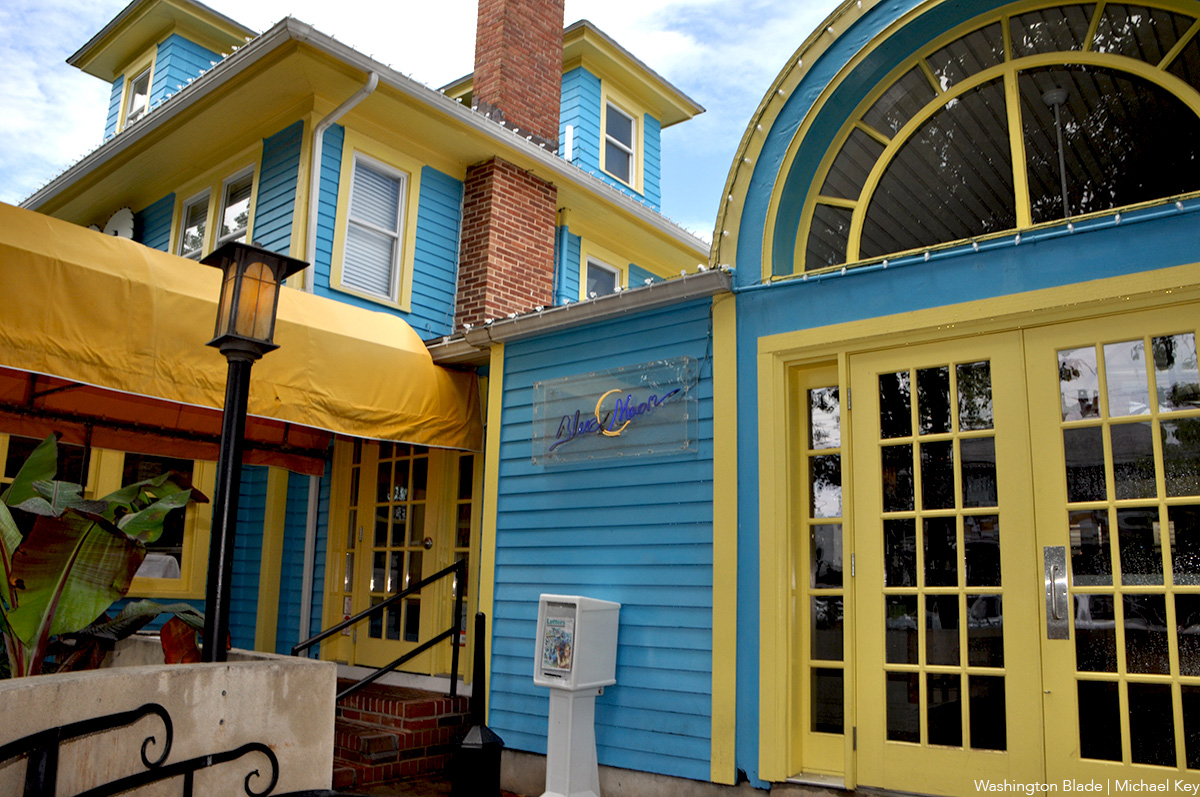
Gay gasps could be heard around the DMV earlier this week when a real estate listing for Rehoboth Beach’s iconic Blue Moon bar and restaurant hit social media.
Take a breath. The Moon is for sale but the longtime owners are not in a hurry and are committed to preserving its legacy as a gay-friendly space.
“We had no idea the interest this would create,” Tim Ragan, one of the owners, told the Blade this week. “I guess I was a little naive about that.”
Ragan explained that he and longtime partner Randy Haney are separating the real estate from the business. The two buildings associated with the sale are listed by Carrie Lingo at 35 Baltimore Ave., and include an apartment, the front restaurant (6,600 square feet with three floors and a basement), and a secondary building (roughly 1,800 square feet on two floors). They are listed for $4.5 million.
The bar and restaurant business is being sold separately; the price has not been publicly disclosed.
But Ragan, who has owned the Moon for 20 years, told the Blade nothing is imminent and that the Moon remains open through the holidays and is scheduled to reopen for the 2026 season on Feb. 10. He has already scheduled some 2026 entertainment.
“It’s time to look for the next people who can continue the history of the Moon and cultivate the next chapter,” Ragan said, noting that he turns 70 next year. “We’re not panicked; we separated the building from the business. Some buyers can’t afford both.”
He said there have been many inquiries and they’ve considered some offers but nothing is firm yet.
Given the Moon’s pioneering role in queering Rehoboth Beach since its debut 44 years ago in 1981, many LGBTQ visitors and residents are concerned about losing such an iconic queer space to redevelopment or chain ownership.
“That’s the No. 1 consideration,” Ragan said, “preserving a commitment to the gay community and honoring its history. The legacy needs to continue.” He added that they are not inclined to sell to one of the local restaurant chains.
You can view the real estate listing here.
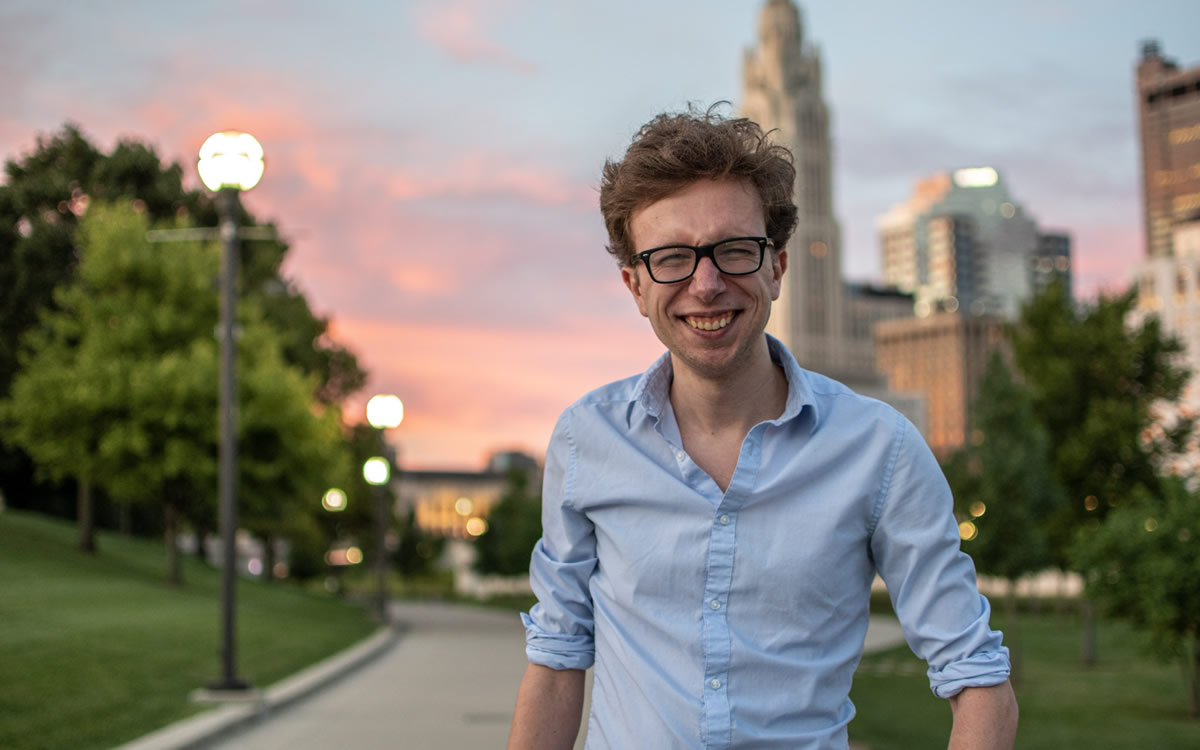
The Comings & Goings column is about sharing the professional successes of our community. We want to recognize those landing new jobs, new clients for their business, joining boards of organizations and other achievements. Please share your successes with us at [email protected].
Congratulations to Tristan Fitzpatrick on his new position as Digital Communications Manager with TerraPower. TerraPower creates technologies to provide safe, affordable, and abundant carbon-free energy. They devise ways to use heat and electricity to drive economic growth while decarbonizing industry.
Fitzpatrick’s most recent position was as Senior Communications Consultant with APCO in Washington, D.C. He led integrated communications campaigns at the fourth-largest public relations firm in the United States, increasing share of voice by 10 percent on average for clients in the climate, energy, health, manufacturing, and the technology. Prior to that he was a journalist and social media coordinator with Science Node in Bloomington, Ind.
Fitzpatrick earned his bachelor’s degree in journalism with a concentration in public relations, from Indiana University.
Congratulations also to the newly elected board of Q Street. Rob Curis, Abigail Harris, Yesenia Henninger, Stu Malec, and David Reid. Four of them reelected, and the new member is Harris.
Q Street is the nonprofit, nonpartisan, professional association of LGBTQ+ policy and political professionals, including lobbyists and public policy advocates. Founded in 2003 on the heels of the Supreme Court’s historic decision in Lawrence v. Texas, when there was renewed hope for advancing the rights of the LGBTQ community in Washington. Q Street was formed to be the bridge between LGBTQ advocacy organizations, LGBTQ lobbyists on K Street, and colleagues and allies on Capitol Hill.
District of Columbia
New queer bar Rush beset by troubles; liquor license suspended
Staff claim they haven’t been paid, turn to GoFundMe as holidays approach

The D.C. Alcoholic Beverage and Cannabis Board on Dec. 17 issued an order suspending the liquor license for the recently opened LGBTQ bar and nightclub Rush on grounds that it failed to pay a required annual licensing fee.
Rush held its grand opening on Dec. 5 on the second and third floors of a building at 2001 14 Street, N.W., with its entrance around the corner on U Street next to the existing LGBTQ dance club Bunker.
It describes itself on its website as offering “art-pop aesthetics, high-energy nights” in a space that “celebrates queer culture without holding back.” It includes a large dance floor and a lounge area with sofas and chairs.
Jackson Mosley, Rush’s principal owner, did not immediately respond to a phone message from the Washington Blade seeking his comment on the license suspension.
The ABC Board’s order states, “The basis for this Order is that a review of the Board’s official records by the Alcoholic Beverage and Cannabis Administration (ABCA) has determined that the Respondent’s renewal payment check was returned unpaid and alternative payment was not submitted.”
The three-page order adds, “Notwithstanding ABCA’s efforts to notify the Respondent of the renewal payment check return, the Respondent failed to pay the license fee for the period of 2025 to 2026 for its Retailer’s Class CT license. Therefore, the Respondent’s license has been SUSPENDED until the Respondent pays the license fees and the $50.00 per day fine imposed by the Board for late payment.”
ABCA spokesperson Mary McNamara told the Blade that the check from Rush that was returned without payment was for $12,687, which she said was based on Rush’s decision to pay the license fee for four years. She said that for Rush to get its liquor license reinstated it must now pay $3,819 for a one-year license fee plus a $100 bounced check fee, a $750 late fee, and $230 transfer fee, at a total of $4,919 due.
Under D.C. law, bars, restaurants and other businesses that normally serve alcoholic beverages can remain open without a city liquor license as long as they do not sell or serve alcohol.
But D.C. drag performer John Marsh, who performs under the name Cake Pop and who is among the Rush employees, said Rush did not open on Wednesday, Dec. 17, the day the liquor board order was issued. He said that when it first opened, Rush limited its operating days from Wednesday through Sunday and was not open Mondays and Tuesdays.
Marsh also said none of the Rush employees received what was to be their first monthly salary payment on Dec. 15. He said approximately 20 employees set up a GoFundMe fundraising site to raise money to help sustain them during the holiday period after assuming they will not be paid.
He said he doubted that any of the employees would return to work in the unlikely case that Mosley would attempt to reopen Rush without serving liquor or if he were to pay the licensing fee to allow him to resume serving alcohol without having received their salary payment.
As if all that were not enough, Mosley would be facing yet another less serious problem related to the Rush policy of not accepting cash payments from customers and only accepting credit card payments. A D.C. law that went into effect Jan. 1, 2025, prohibits retail businesses such as restaurants and bars from not accepting cash payments.
A spokesperson for the D.C. Department of Licensing and Consumer Protection, which is in charge of enforcing that law, couldn’t immediately be reached to determine what the penalty is for a violation of the law requiring that type of business to accept cash payments.
The employee GoFundMe site, which includes messages from several of the employees, can be accessed here.
Mosley on Thursday responded to the reports about his business with a statement on the Rush website.
He claims that employees were not paid because of a “tax-related mismatch between federal and District records” and that some performers were later paid. He offers a convoluted explanation as to why payroll wasn’t processed after the tax issue was resolved, claiming the bank issued paper checks.
“After contacting our payroll provider and bank, it was determined that electronic funds had been halted overnight,” according to the statement. “The only parties capable of doing so were the managers of the outside investment syndicate that agreed to handle our stabilization over the course of the initial three months in business.”
Mosley further said he has not left the D.C. area and denounced “rumors” spread by a former employee. He disputes the ABCA assertion that the Rush liquor license was suspended due to a “bounced check.” Mosley ends his post by insisting that Rush will reopen, though he did not provide a reopening date.
-

 Politics3 days ago
Politics3 days agoLGBTQ Democrats say they’re ready to fight to win in 2026
-

 District of Columbia2 days ago
District of Columbia2 days agoBrian Footer suspends campaign for Ward 1 D.C. Council seat
-

 Chile5 days ago
Chile5 days agoFar-right José Antonio Kast elected Chile’s next president
-

 Opinions3 days ago
Opinions3 days agoLighting candles in a time of exhaustion

